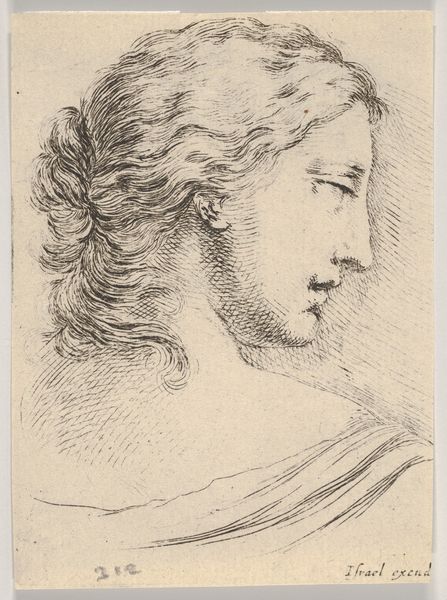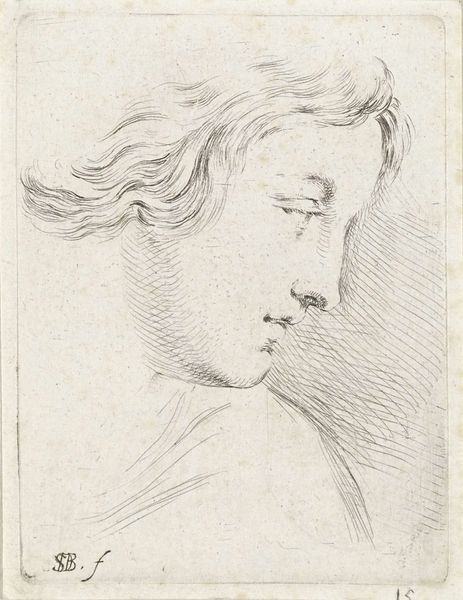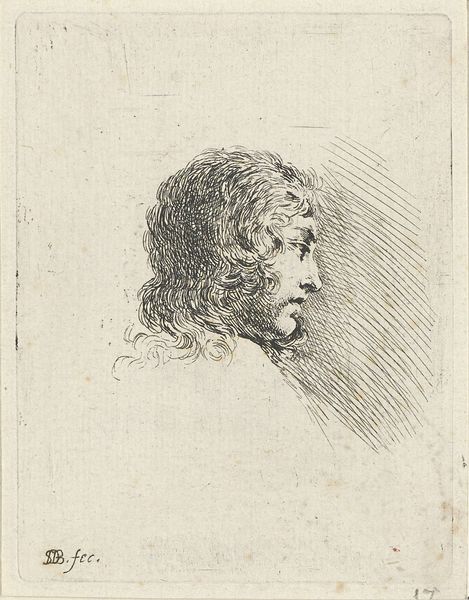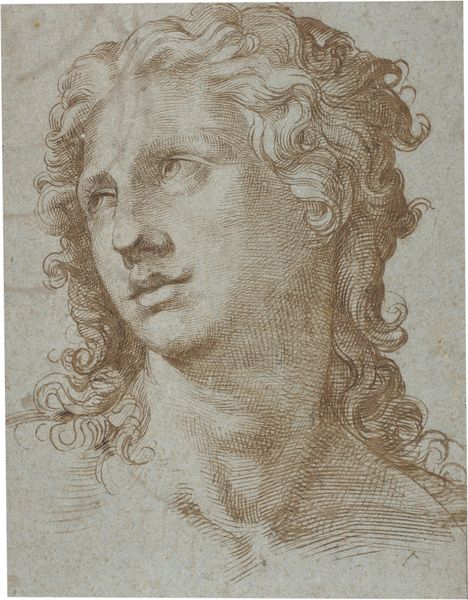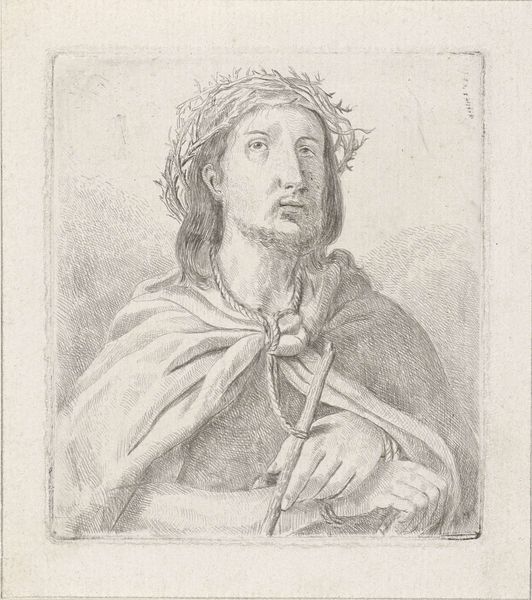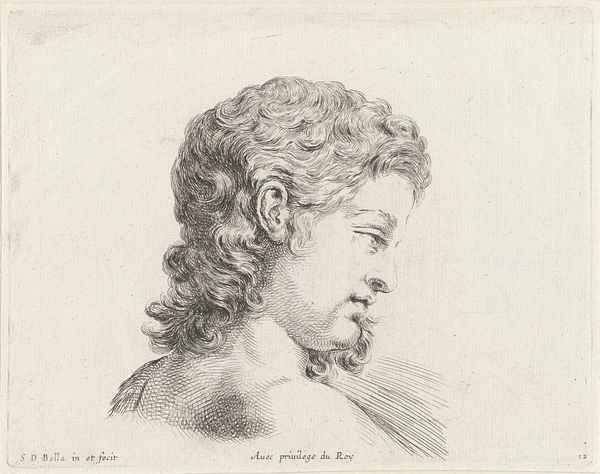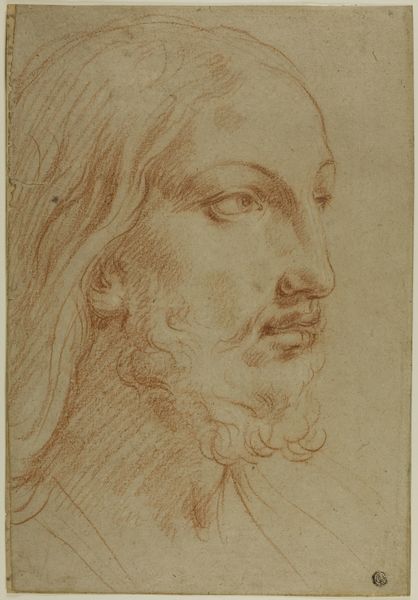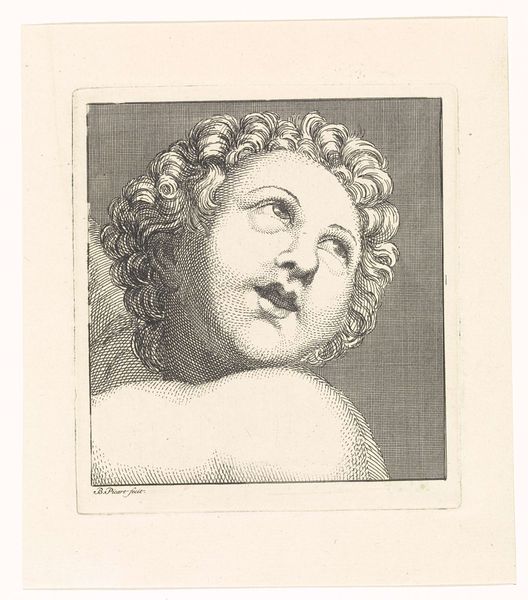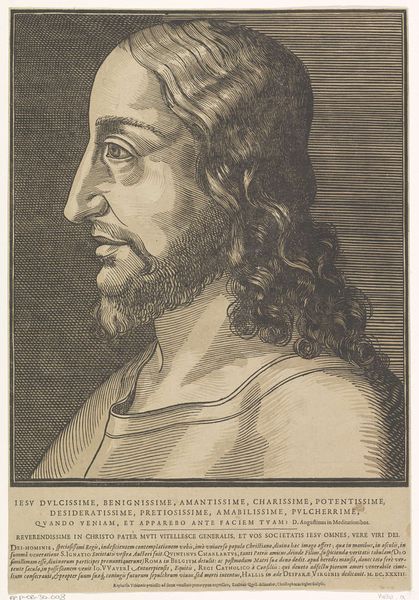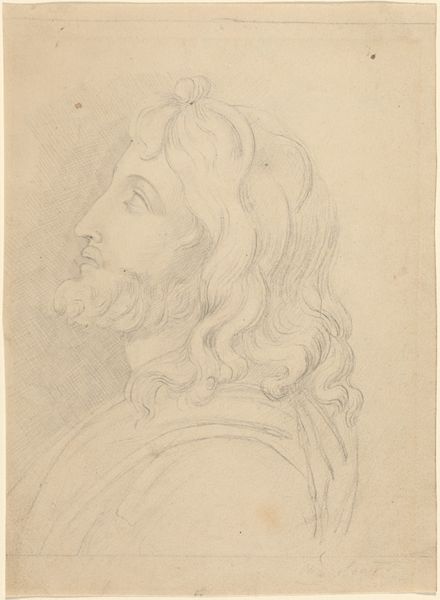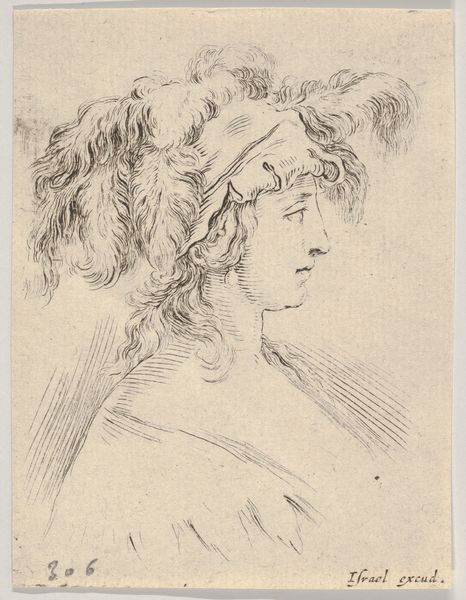
drawing, metal, engraving
#
portrait
#
pencil drawn
#
drawing
#
baroque
#
metal
#
figuration
#
pencil drawing
#
line
#
portrait drawing
#
italian-renaissance
#
engraving
Dimensions: height 84 mm, width 64 mm
Copyright: Rijks Museum: Open Domain
Curator: Ah, this Stefano della Bella engraving from about 1650, "Head of a Woman, Seen from the Back, Facing Right." It’s housed right here in the Rijksmuseum. It strikes me, just now, with its remarkable quietness. Editor: Quiet is a good word. There's an almost melancholic resignation in the downturn of her head. Who was she, and what circumstances might have placed her, perhaps against her will, within Bella’s gaze? Curator: I think part of that feeling comes from the stark simplicity of the medium. The artist is using line and hatching with impressive efficiency. And, look closely – you can almost feel the bite of the metal tool into the copper plate, a labor-intensive process from design to the final printing. Editor: Indeed. But beyond technique, consider the socio-political implications. The portrait, even one depicting only the back of a woman's head, speaks volumes about power, visibility, and who is granted agency in representation. Was she a member of the elite, afforded this artistic representation, or someone whose likeness was taken without consent? Curator: Those are excellent questions to ponder! The fashion in the elaborate hairstyle might suggest a woman of some status, but the averted gaze can also suggest that she's the object, not the agent, of the viewing experience, of course. Still, it is quite economical use of line. Look how a single stroke suggests the curve of her neck. The Baroque influence is obvious but not overwrought. Editor: The "Baroque" aspect is particularly important! It’s worth digging into how the era's rigid social hierarchies informed not only Della Bella's art but also his, likely male, patron’s desires. These were systems that heavily oppressed women, determining their roles and dictating their representations within society. Curator: These portraits served different functions than say photographic images do today. Here the process of labor becomes part of the object. Even her elaborate hair required extensive labor. It becomes embedded, literally and figuratively, in the artwork. Editor: Right. Considering those systems—gender, class, power—the creation of this "Head of a Woman" prompts crucial discussion. Let's keep asking uncomfortable but important questions! Curator: Definitely food for thought, especially next time I encounter Stefano Della Bella's work. A testament to his craftsmanship, undoubtedly.
Comments
No comments
Be the first to comment and join the conversation on the ultimate creative platform.
